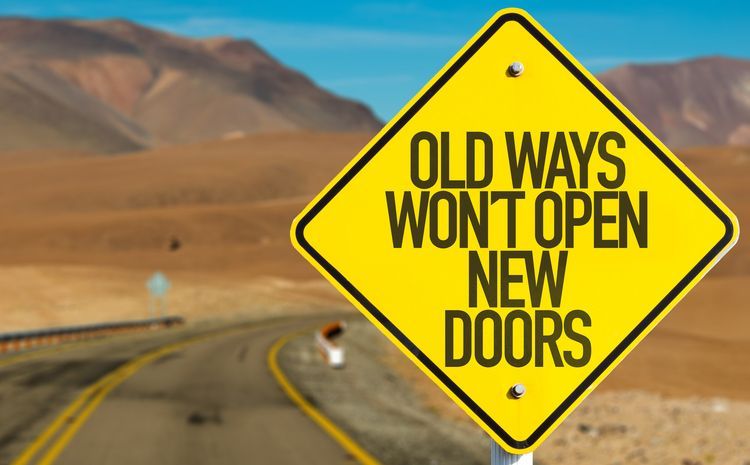BLOG
Small Business Survival Guide
The Real Odds (and How to Redefine Them)
The statistics can be sobering for small business owners. One in five small businesses doesn’t make it past its first year.
By year three, nearly 40% have closed their doors. By year five, about half have failed.
Yet most of these businesses didn’t collapse because their owners lacked skill, drive, or passion. They failed because no one showed them how to build success by design, not by accident.
As a Business Coach and Executive Leadership Coach, I’ve seen this pattern repeatedly.
Every entrepreneur begins with a spark; an exciting vision of freedom, growth, and a sense of purpose. But maintaining that momentum requires more than determination. It requires clarity, structure, and strategic focus.
True success in the first three years depends on five essential pillars:
- A clear market need for your product or service.
- Healthy cash flow and margin awareness.
- A business model that can scale sustainably.
- The right team or partners to share the load.
- Consistent marketing visibility to attract your ideal clients.
When even one of these weakens, cracks appear. Left unaddressed, those cracks can threaten everything you’ve built.
The good news is that you can fix them, starting now. November is the ideal month to “failure-proof” your business for 2026 while you still have time to act strategically.
Why Businesses Fail and How to Stay Standing
Businesses rarely fail overnight. Decline begins quietly; a missed review, a delayed decision, a loss of focus amid busyness. The owners are working hard, but not necessarily on the right things.
What separates those who thrive from those who falter is perspective. The most successful entrepreneurs know when to pause, step back, and evaluate objectively.
They invest time in reflection, and when necessary, reach out for Executive Coaching or Small Business Coaching to gain outside insight.
The goal isn’t perfection; it’s awareness. Once you clearly identify the risks, you can adjust your course before minor issues become major setbacks.

The Five Risk Zones Every Entrepreneur Must Watch
Think of these as your business dashboard. Monitoring these five risk zones allows you to spot warning signs early and stay on the growth path.
1.Market Fit
Even great offerings lose traction when client needs evolve.
Ask yourself:
- Has my target market changed since I launched?
- Do my current services still solve the correct problems?
- Which clients or industries deliver the highest ROI?
Strong market fit comes from curiosity. Interview your clients, ask for feedback, and adapt before competitors do.
2. Cash Flow
Cash flow is the heartbeat of your business. Without it, even high revenue can’t sustain operations.
If things feel tight, review your expenses from the last 60 days. Cancel non-essential subscriptions. Negotiate vendor contracts. Ask your most loyal clients for introductions to others they care about, so that you can explore ways to help them, too.
Cash is oxygen. Monitor it daily, not monthly.
3. Team & Leadership
Whether you lead one assistant or a whole team, leadership determines your capacity to succeed.
Are you delegating effectively? Providing clear goals and feedback?
As a Business Coach, I often see owners stuck doing $30/hour tasks while neglecting $300/hour strategy work. Effective delegation frees you to focus on leadership and growth.
4. Business Model
Is your business scalable, or does it depend entirely on you?
If every sale relies on your direct involvement, growth will eventually plateau.
Revisit your offerings. Identify your most profitable services that align with your Pinnacle Gift™; the work that you do best and that has the greatest impact. Then systematize the rest.
That’s how small business owners move from self-employment to true entrepreneurship.
5. Marketing Visibility & Adaptability
Even a strong business can fade into obscurity. Visibility is your brand’s lifeline.
If your marketing has gone quiet, it’s time to re-engage:
- Ask three loyal clients for testimonials and introductions to others you can help.
- Share one genuine story of growth or challenge from this year.
- Highlight the results your clients have achieved. Authenticity builds credibility.
Consistent visibility builds trust and opportunity.

The Success Boosting Prevention Check
Don’t wait until January to assess your business health.
Take your Success Boosting Prevention Check now. It's a simple five-minute self-audit that reveals where you should focus before year-end.
Rate yourself from 1 (struggling) to 5 (strong) in each risk zone:
- Market Fit
- Cash Flow
- Team & Leadership
- Business Model
- Marketing Visibility
Then, choose one area to focus on strengthening over the next six weeks.
This week: Take one concrete step.
Next week: Take another!
If cash flow is your weak spot, review your expenses today and trim the unnecessary costs.
If marketing is lagging, reconnect with past clients and ask for referrals.
Momentum is built one decisive action at a time.
This simple exercise, repeated quarterly, is how small business owners stay proactive instead of reactive.
What Successful Founders Do Differently
After years of Executive Coaching, one pattern stands out:
The founders who thrive beyond year three are those who intentionally step out of the day-to-day to work on their business.
They build success by design.
Here’s how they lead differently:
- Track progress weekly, not yearly.
- Review key metrics, including revenue, leads, and margins, every week to identify trends early.
- Delegate tasks that drain energy.
- View delegation not as an expense, but as a growth strategy.
- Align every decision with their Pinnacle Gift™.
- Focus on the work that makes the most significant difference and build systems for everything else.
- Build repeatable processes.
- Templates, checklists, and automation create consistency and scalability.
- Reflect and reset regularly.
Quarterly or year-end reviews give them clarity, confidence, and direction.
These aren’t massive changes; they’re habits. Small, consistent shifts compound into significant growth.
That’s where leadership maturity emerges, and where Executive Leadership Coaching often has its most significant impact: helping founders lead with calm confidence instead of constant urgency.

Summary: Turn Reflection into Momentum
The final six weeks of the year are your best opportunity to design a stronger 2026. The economy will continue to move forward, but you can step into it with renewed clarity and strategic intent.
Start with your Success Boosting Prevention Check.
Know your numbers. Know your risk zones. Know where to focus next.
Six Week Success Sprint
And if you’re ready to move from reflection to results, the Six Week Success Sprint is designed for precisely this season.
In this focused, results-driven coaching sprint, you’ll:
- Choose one high-impact initiative (revenue, delegation, or systems)
- Complete a 90-minute strategy session to design your plan
- Meet weekly for accountability and support
- Finish with clarity, measurable progress, and momentum
The Six Week Sprint isn’t about adding more to your plate; it’s about removing what’s in the way of growth.
If you’re a small business owner or executive ready to step into 2026 with confidence and structure, this program is your starting line.
Because small business success isn’t luck: it’s clarity, strategy, structure, and execution.
And the best time to begin is now.











